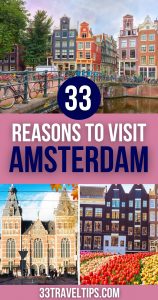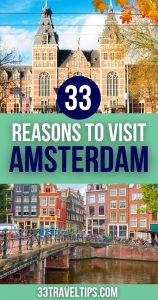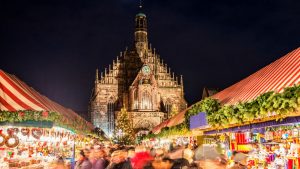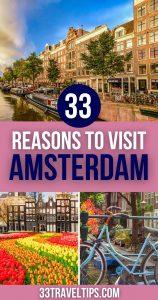
Wondering whether to travel to the Dutch capital? You should know that:
Amsterdam is worth visiting for its pulsating nightlife, infamous coffeeshops, and picturesque canals. Activity-seekers will love its bike-friendly atmosphere, culture geeks – the Rijksmuseum, adventure fans – the red-light districts, and architecture enthusiasts – the city’s crooked houses.
In this guide, we present you 33 reasons to visit Amsterdam.
From the mesmerizing marketplaces to the gorgeous bridges, and from the diverse cuisine to the fascinating houseboats, one thing is certain – you’ll have a blast in the so-called “Venice of the North”.
Fasten your virtual seatbelts on, and let’s discover!
✅ Note: This article contains affiliate links. In case you purchase something through one of these links, we may receive a small commission at no extra cost to you. Thank you for helping us keep creating the free content on this website!
Visit Amsterdam for Its Famous Landmarks
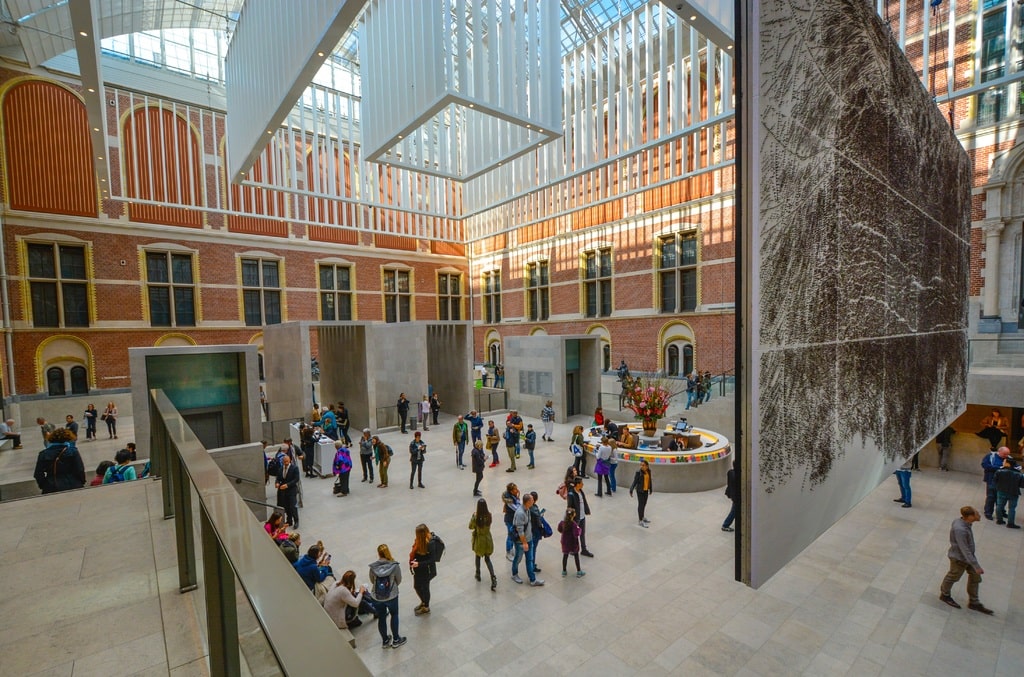
Amsterdam is known for its numerous stunning attractions. Find the most fascinating of them in the section below.
- Rijksmuseum. The famed Rijksmuseum displays over 8,000 artworks and artifacts, covering 800 years of Dutch art and history. Some of the world-famous masterworks you must explore are Vermeer’s paintings, the Night Watch by Rembrandt, and “the rough style” portraits of Frans Hals. Every year, over 2 million visitors flock to the Rijksmuseum, making it the most visited in the Netherlands.
- The Royal Palace. The 350-year-old palace initially acted as a City Hall for burgomasters and magistrates. With its wealth stemming from ocean trade, Amsterdam held a prominent position in Europe during the so-called Dutch Golden Age. In 1808, King Louis Napoleon Bonaparte transformed the building into a royal residence. The Royal Palace is open to the public when there are no official occasions or state visits. The staggeringly beautiful exhibitions and intricate interior of the palace are definitely worth a visit.
- Bloemenmarkt. The Amsterdam Flower Market is the only floating flower market on the planet. The irresistible fragrances filling the streets all year round make the bustling market not only a feast for the eyes but also for the senses. Founded in 1862, Bloemenmarkt is located at the heart of the Singel Canal. The flower stalls on the houseboats transport you to a bygone era when the market relied on daily boat deliveries. You can purchase bouquets, single flowers, or bulbs at Bloemenmarkt.
- Albert Cuypmarkt. Functioning since 1905, Albert Cuypmarkt is the largest and most popular open-air bazaar in the Netherlands. With 260 stands covering approximately 2,000 ft. (600 m), the over-a-century-old marketplace is an impressive sight. You’ll find anything from exotic fruits, meats, and flowers to jewelry, leather goods, and cheap clothes. Vendors are fun and friendly, and the overall atmosphere of the bazaar is laid back, which makes shopping a breeze.
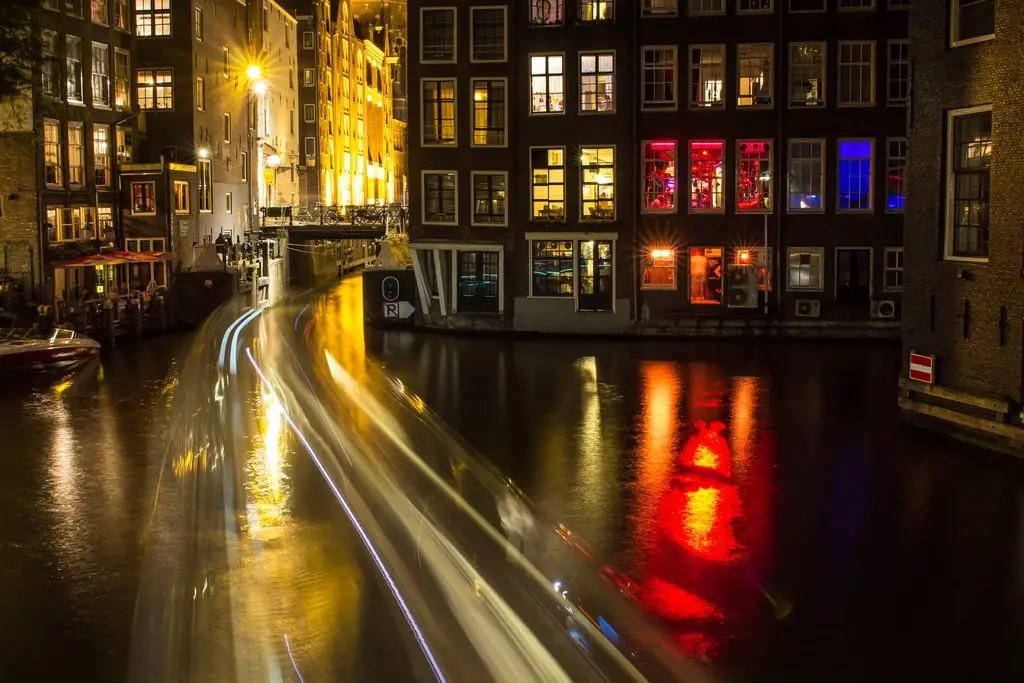
Discover the Dutch Capital’s Peculiar Symbols
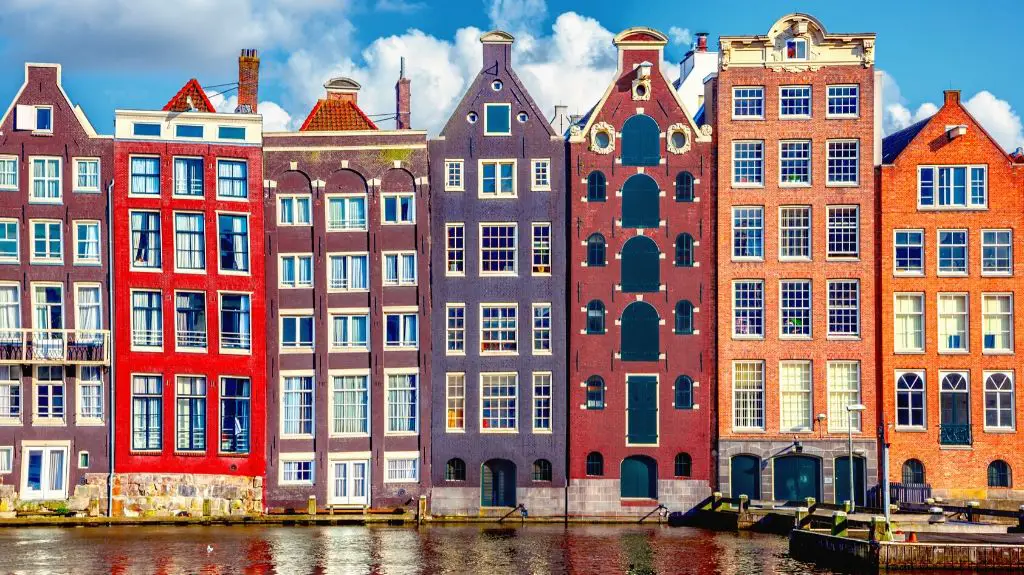
Amsterdam is jam-packed with fascinating sights to explore. In the following section, we’ll show you the most peculiar symbols of the Dutch capital.
- The leaning houses. As you walk through the streets of Amsterdam, you’ll be struck by the city’s iconic, crooked architecture. To deal with the swampy grounds, Amsterdam’s houses are built on long wooden stilts drilled into wet soil. The natural deterioration over the centuries caused the wooden poles to sag. Another noteworthy aspect is the slanted façades of the buildings. The narrow fronts of the houses make it challenging to carry heavy goods up the stairs. That’s why the houses are built with a forward incline to ensure a smooth transfer of items through the windows. Explore the crooked houses by joining this special, private walking tour of Amsterdam.
- The Three Xs. Despite its reputation for X-rated entertainment, the three X-s on Amsterdam’s flag have no connection to adult content. The XXX symbol represents three vertical St. Andrew’s Crosses. The saint was a fisherman who lived in the 1st century. He was crucified on a “cross decussate” (X-shaped cross). The symbol’s origins date back to the early 16th century when it first appeared on the flags of registered ships and boats.
- Canals. In 2010, the 17th-century Amsterdam canal ring was added to the list of UNESCO World Heritage Sites. Known as “Venice of the North”, Amsterdam has 165 canals with a total length of 60 mi (96 km) across the city. Three concentric canals, the Herengracht, Prinsengracht, and Keizersgracht, encircle the city. Cruising Amsterdam’s waterways is the ultimate way to explore the sights of the city. Ticket prices start from €12.50 ($14.70) and may vary depending on the pier of departure, journey length, boat type, and tour inclusion. Use this link to book our favorite canal cruise in Amsterdam.
- Islands. Amsterdam is home to roughly 90 islands forming the city’s territory. The majority of them are artificial. To meet the housing needs of the city’s escalating population, the local government constructed an archipelago of 10 man-made islands in 2015. The Dutch used the “pancake method” technique to create the islands, which will house up to 45,000 people.
- Free Ferries. One of Amsterdam’s unique features is the availability of free ferries for transportation. This is not a common amenity in most cities around the world. Find the free connections across the River IJ when departing from the central station. The boats, painted in blue and white, offer a convenient way for pedestrians, cyclists, and mopeds to reach various piers in Amsterdam Noord.
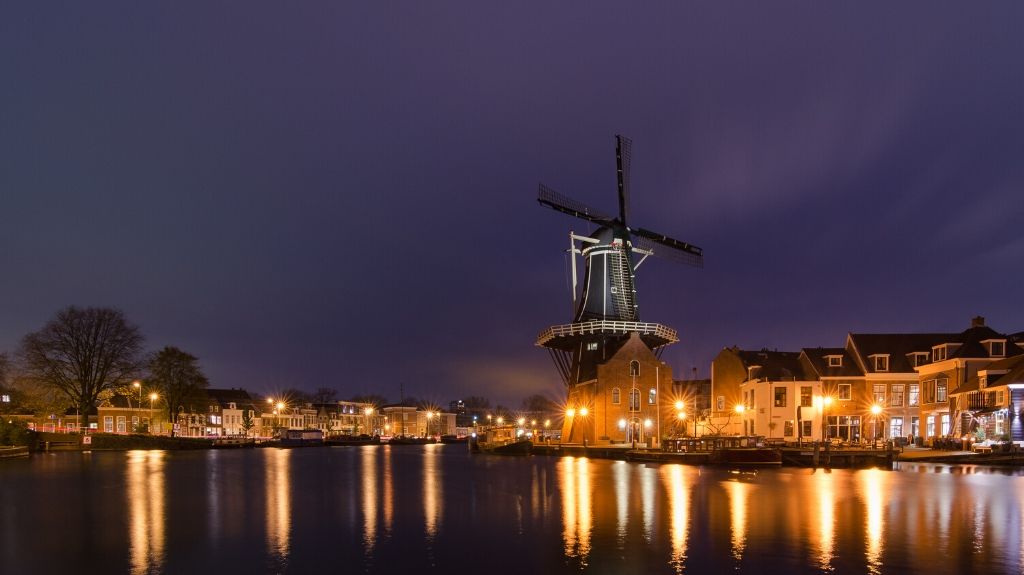
- Bicycles. Amsterdam consistently ranks in the Top 10 most bike-friendly cities across the globe. Bicycles hold a special place in the hearts of the Dutch. To truly grasp their significance in Amsterdam’s culture, consider that there are four times more bicycles than cars in the city. Saying that cyclists own the Dutch capital isn’t an overstatement. No matter where you look, you’ll see someone cycling. Wanna feel like a local? Explore the streets of Amsterdam on this guided, eco-certified bike tour.
- Orange. Even though the color isn’t on the national flag, orange is widely recognized as a symbol of the Netherlands. The reason for the Dutch romance with orange is tied to the Royal Family whose members belong to the House of Orange-Nassau. The dynasty finds its origins in 1544. That’s when William of Orange gained the title at the fragile age of 11. To witness the entire city transformed into a sea of orange, plan a visit to Amsterdam on April 27, King’s Day.
- Windmills. Contrary to popular belief, you don’t have to leave Amsterdam to see this piece of Dutch heritage. Historically, there were countless windmills in the city serving different purposes. Some helped the Dutch fight floods, while others helped them prepare mustard or collect crops. As the city expanded, many of the windmills were either moved or dismantled. Today only eight of those remain, with just one open to the public. Founded in 1847, the Molen van Sloten continues to function today. Discover Amsterdam’s only-operational windmill on this guided tour.
- Tulips. The tulip bulbs are deeply rooted in Dutch history, having first been introduced to the nation in 1593. During the 17th century, the flowers were incredibly valuable. A single tulip was worth as much as a mansion on Amsterdam’s Grand Canal. The tulip season lasts from the end of March until halfway through May. Plan a visit to the Flower Market and the Keukenhof Gardens in mid-April if you want to see the tulip bulbs blooming at their peak.
- Clogs. Also known as Klompen, clogs have been an essential part of the lifestyle of the Dutch working class since the 13th century. The wooden, water-resistant shoes protected the feet of artisans, fishermen, and farmers from the wet climate and allowed them to walk on the soppy ground. The sturdy handmade clogs were thick-soled with leather straps on top. However, you won’t find anyone in the city going about their day wearing them. Amsterdam’s gift shops have many variants of clogs as souvenirs for tourists to take home.
Go to Amsterdam for its Unique Lifestyle
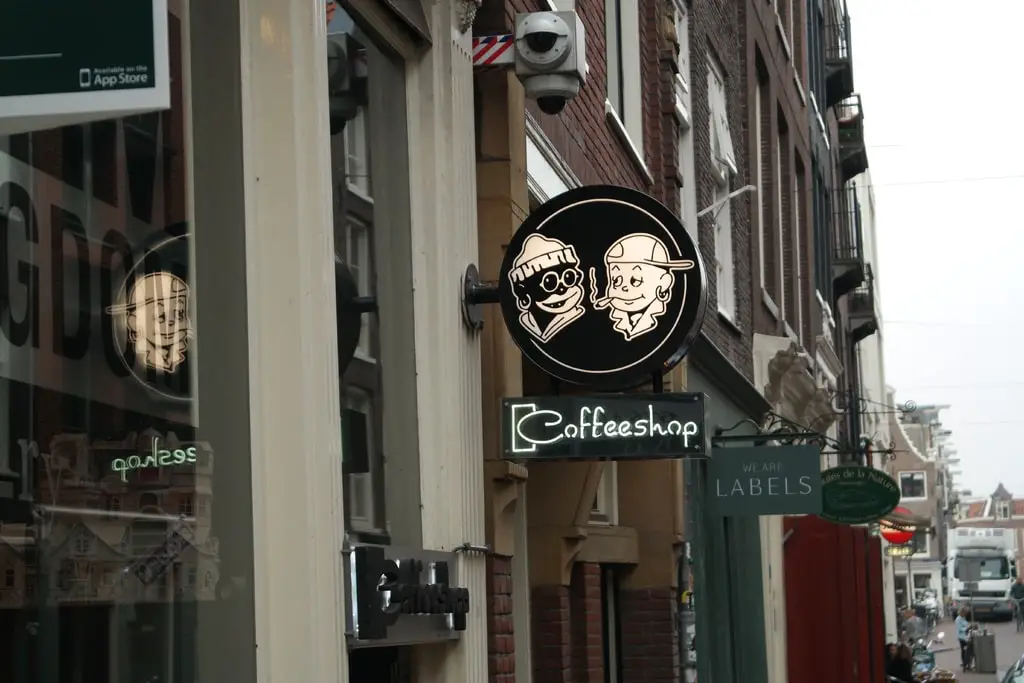
Amsterdam is worth visiting for the countless unique experiences only typical for the Dutch capital. This section will show you the one-of-a-kind lifestyle of Amsterdam.
- Houseboats. What was once a symbol of poverty is now a desirable dwelling moored in Amsterdam’s waters. The luxuriously furnished, multi-story woonark (house ark) is equipped with modern amenities and isn’t motorized. Many floating homes are a century old and are anchored to a specific spot in the canals of Amsterdam. Around 5,500 people living in the 2,500 boat homes enjoy jaw-dropping vistas of Amsterdam’s canal ring and waterways. Fancy staying in a boat in the calm water? You can book a houseboat here.
- Coffeeshops. Amsterdam is home to over 160 coffeeshops selling a variety of marijuana strains. In the Netherlands, a coffeeshop is a legal establishment for smoking weed or eating desserts infused with cannabis. Drug dealers used coffeeshops as a cover name to sell soft drugs. Even though smoking marijuana is now legal in the Netherlands, the name remains the same. Note that if traditional espresso or cappuccino is more your thing, then koffiehuis (coffee house) is your place.
- The elevation. Most of the territory of the Netherlands is reclaimed from the sea. The land around Amsterdam was once a part of a shallow bay. With the sea level rising with time, the city’s land began to submerge gradually. That’s why the Dutch capital ended up below sea level. Amsterdam’s lowest elevation is -23 ft. (-7 m), with the average being -6.5 ft. (-2 m).
- Nightlife. Amsterdam is distinguished for its nightlife culture. A host of venues, festivals, and parties attract music lovers like a gravitational pull. From techno and house to trance, hip-hop, and funk, DJs keep the crowd going wild all night long. Want to dance till you drop or enjoy a pint of beer with two fingers of foam? Amsterdam has the recipe for the most buzzing night out for people of all tastes.
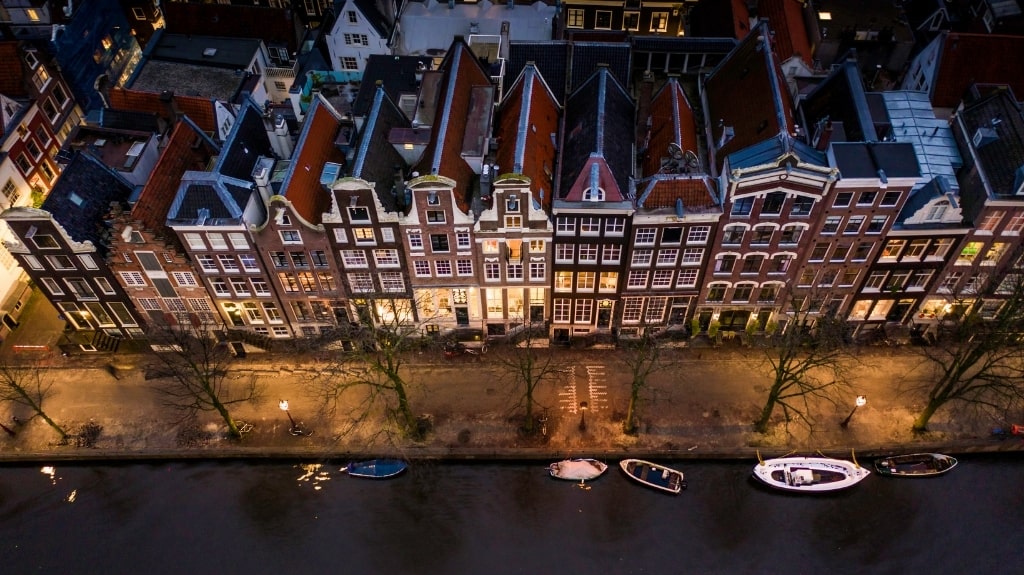
- Safety. The Economist’s Safe Cities Index 2021 placed Amsterdam as the sixth most secure city in the world. However, don’t stir the peaceful environment of the town by doing these two things. Firstly, don’t take pictures of brothels or ladies of the night in the red-light districts. Secondly, and more importantly, never buy or consume drugs on the street.
- Diversity. The Dutch capital is known for its diverse culture. The city’s urban population is under 1 million, but people from over 180 countries call Amsterdam home. You’ll meet members of different ethnic groups with countless backgrounds and traditions in the city. The variety of food, festivals, and art exhibitions is another example of the cross-cultural influence on the Dutch capital. Besides that, millions of tourists from across the world visit Amsterdam every year, creating a distinct cultural fusion.
- One-of-a-kind lodgings. One of the things that make Amsterdam worth visiting is its unique accommodations. In the Dutch capital, you can choose between picturesque houseboats, 17th-century buildings, and reinstated bridge houses. De Pijp, De Wallen, and Jordaan are the best areas to stay in Amsterdam for an unusual experience. So, if you’re looking for something you’ll never forget, don’t hesitate to book your stay in this quirky city.
- Chinatown. Amsterdam takes pride in hosting Europe’s oldest Chinatown. In the early 20th century, Chinese sailors settled in the Zeedijk area of Amsterdam – a former red-light district. The neighborhood boasts a unique blend of Chinese, Indonesian, Thai, and Vietnamese cultures. Want to treat your tastebuds to something extraordinary? Restaurants in this vibrant region will knock your socks off.
Visit Amsterdam for the Delectable Gastronomy
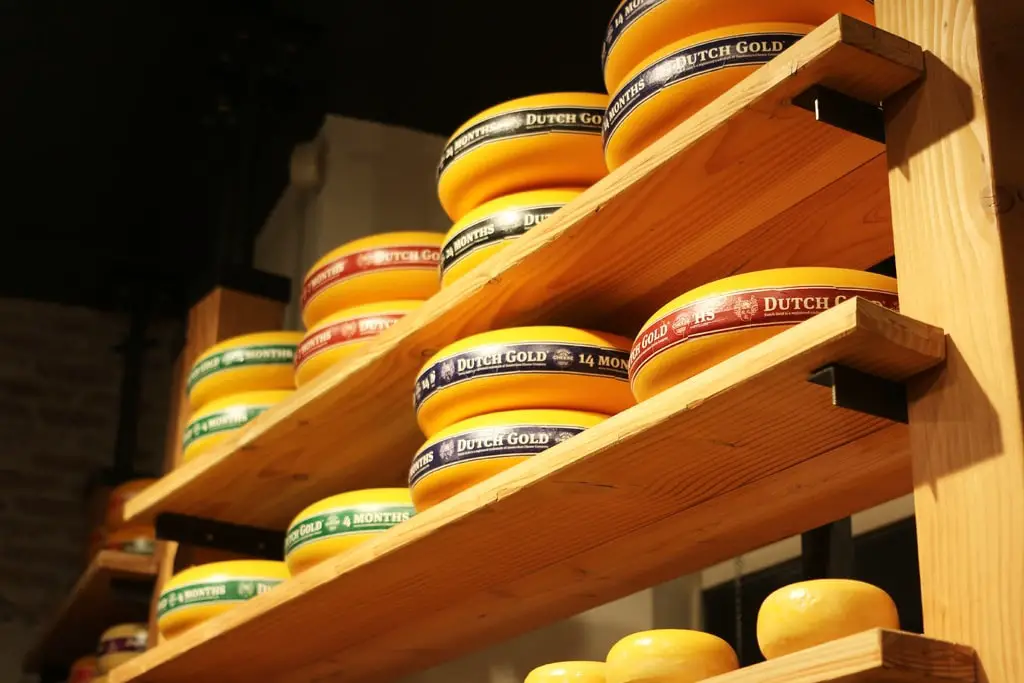
Dutch cuisine might not rival Italian or French, but if you like fried dishes, you’ll have a gourmet blast in Amsterdam. Let’s explore the most notable foods and beverages in the Dutch capital.
- Cheese. What’s a better place to try cheese than the leading exporting country in the world? If you love Edam, Leyden, Limburger, Gouda, or Maasdam, then we have some good news. You can try them all in Amsterdam. Cheese is definitely among the top things Amsterdam is worth visiting for. So, when you’re in the Dutch capital, it’d be a sin not to sample the huge variety of cheeses.
- Dutch New Herring. Also known as Nieuwe Haring, this is a type of raw herring caught during the months of May to July. The fish is cleaned, gutted, and brined for a few days for a crave-worthy flavor. Eateries serve the resulting soft raw fish with chopped onions and gherkins. You can eat the succulent snack on its own or with freshly baked bread.
- Kibbeling. This popular Dutch snack consists of chunks of fish battered in flour, spices, and beer. The deep-fried kibbelings come with delectable garlic mayo or tartar dip sauce. You can buy the dish at fish stands and markets, fish and chips shops, as well as pubs and eateries.
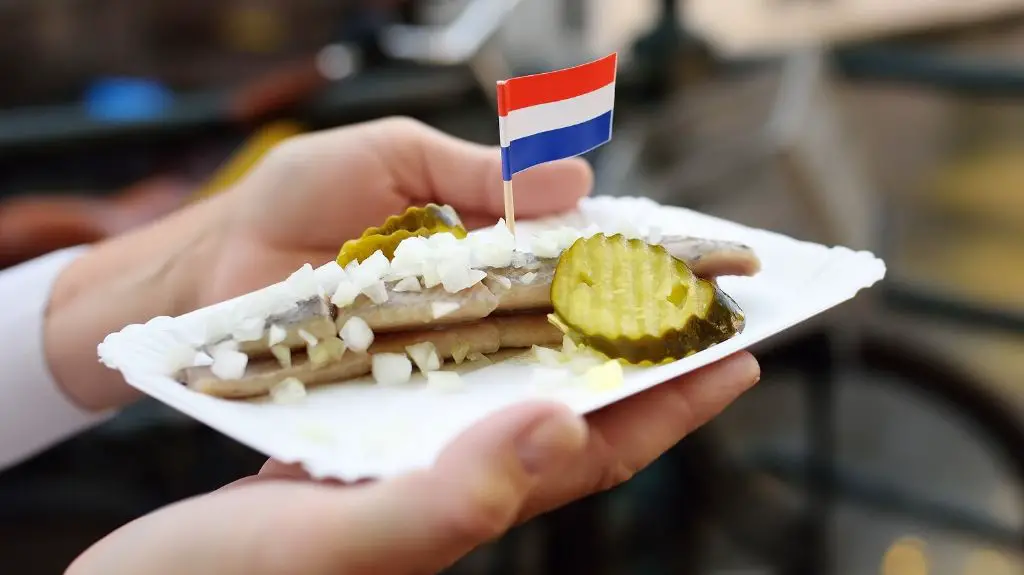
- Frikandel. If you haven’t had enough fried dishes in Amsterdam, our last suggestion is frikandel. The skinless sausage snack is a combination of pork, beef, and other ingredients, deep-fried to perfection. You can either savor it on its own with a dollop of mayo or nestled in a roll. For the real Dutch experience, smother your frikandel mustard and chopped onions.
- Stroopwafel. Seeking an explosion of taste that’ll make your palate dancing with delight? Then, try stroopwafel in Amsterdam. This baked golden waffle is made from wheat flour, brown sugar, and butter. The sweet, warm caramel syrup between the two layers of the cookie will bless you with culinary ecstasy. The scent of cinnamon and vanilla and the waffle’s rich flavor is perfect for sweet tooths from around the globe. You can easily find stroopwafel in almost every Amsterdam café or supermarket.
- Beer. In the 16th century, drinking water in Amsterdam was often contaminated. So, the city’s folk took beer as a source to quench their thirst. Since then, the Dutch capital has excelled in brewing a variety of the golden-colored beverages. Heineken is a true icon in Amsterdam’s brewing industry, and the unparalleled flavor of Amstel is also worth a shot. However, if you crave something more potent, the robust nature of the Trappist brew La Trappe will satisfy any beer aficionado.
- Jenever. This juniper-flavored traditional liquor is sometimes regarded as Dutch gin. Jenever can pack a strong punch of up to 50% alcohol. You can find two types of the Dutch gin in Amsterdam. First, you have jonge jenever, which is similar to vodka due to its neutral taste, with hints of juniper and malt wine. Second, you have oude jenever. The “old jenever” has a much smoother taste packed with malty flavors and aromas.
Is Amsterdam Worth Visiting? Now, You Know the Answer
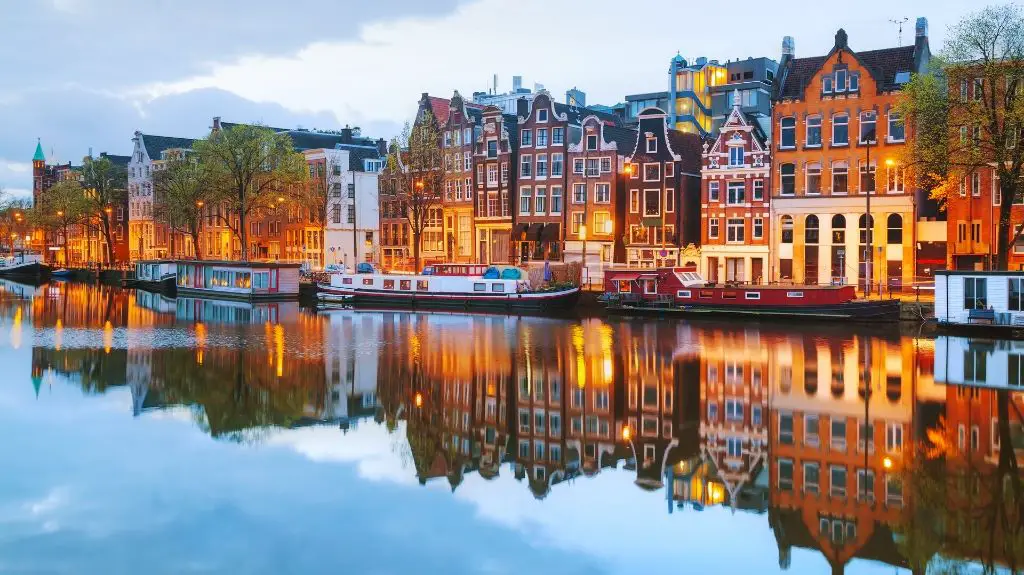
Well, there you have it – 33 top reasons to visit Amsterdam.
From exquisite museums to red-light districts, and from world-class beer and mouthwatering cheese to fascinating canal cruises, the Dutch capital is packed with tons of things to do and see.
Don’t forget one of our best Amsterdam travel tips – leave your prejudices at home and discover the city with an open mind.
Now, we’re curious:
Do you think Amsterdam is fun to visit?
Let us know by leaving a comment below.

